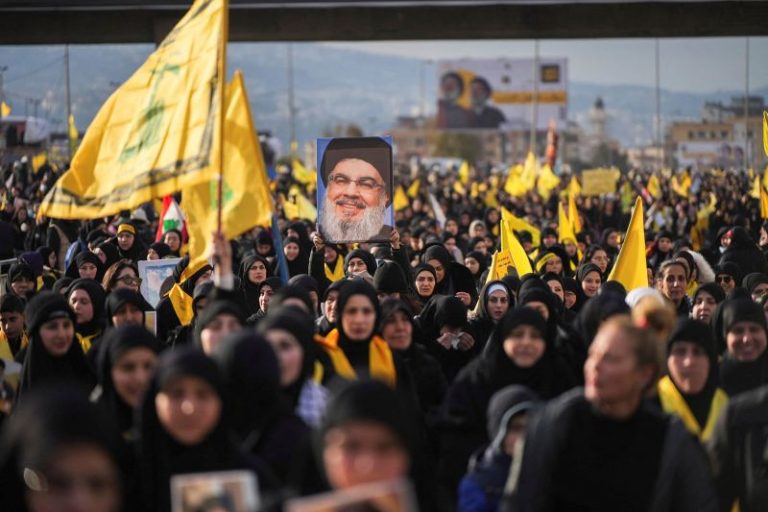The long-delayed funeral for Hezbollah’s leader Hassan Nasrallah is taking place Sunday, nearly five months after he was killed in a massive Israeli airstrike on the southern suburbs of Beirut.
Hezbollah has been left badly depleted by Israeli attacks and the mass event is intended as a show of strength for the militant and political group.
Tens of thousands of mourners flooded Beirut’s largest stadium, where the ceremony begins, and packed the surrounding streets. A large procession will trail a vehicle carrying the late militant leader’s coffin to a shrine in southern Beirut, erected as his final resting place.
Sunday’s ceremony also commemorates Nasrallah’s successor, Hashem Safieddine, who led the militant group for just days before an Israeli strike killed him in early October.
Nasrallah was secretly buried in a private ceremony shortly after his death, according to Hezbollah officials. That he is only being buried now underscores the militant group’s weakened state, after an Israeli military campaign in Lebanon last autumn nearly wiped out the group’s top military brass and killed thousands of its fighters, in addition to hundreds of civilians.
A ceasefire agreement between Hezbollah and Israel was signed last November, ending a months-long war, but drove the militant group deeper underground with Israel continuing to strike what it describes as Hezbollah targets. Israel struck several locations in Lebanon hours before the start of the mass funeral, according to local and state media.
Nasrallah’s death marks the end of an era for a militant group that grew from a rag-tag group of guerrilla fighters in 1982 to a regional force whose influence spanned at least four countries.
He was elected leader of the armed group in 1992 as a 32-year-old cleric. He went on to preside over a guerrilla campaign in southern Lebanon that ultimately drove Israeli forces out of the country in 2000, ending a 22-year occupation. In 2006, he led Hezbollah militants in an all-out war against Israel, which devastated large parts of Lebanon but foiled Israel’s stated goal of dismantling the group.
When wars raged in Syria, Iraq and Yemen, Nasrallah’s forces intervened on behalf of groups backed by Iran, shoring up Tehran’s support.
But Hezbollah’s fortunes changed after the Hamas-led surprise attack on Israel which killed around 1,200 people on October 7, 2023. The militant group launched daily rocket attacks on Israel’s northernmost territory, in support of Hamas, displacing some 60,000 Israelis. Around 100,000 Lebanese residents of the south were also displaced in Israeli attacks as part of a tit-for-tat that spanned nearly a year before it spiralled into an all-out war last September.
Nasrallah called it a “supportive front” that he said aimed to pressure Israel into ceasing its retaliatory offensive in Gaza, which has laid waste to large parts of the besieged territory and killed over 48,000 people.
In mid-September, Israel detonated explosives implanted in thousands of pagers and walkie talkies carried by Hezbollah members and assassinated several of the group’s leaders, laying bare Israel’s thorough infiltration of the armed group.
Severely weakened, Hezbollah’s future as a militant group is being called into question. Israel has vowed to continue to strike the group’s positions until the group disarms and has maintained five strategic positions inside Lebanon’s southern-most territory, breaching the November ceasefire agreement.
Domestically, the group has come under increasing pressure to lay down its arms. That culminated with the newly elected President Joseph Aoun’s inaugural speech in January when he called on weapons to be monopolized under the authority of the state.
Hezbollah has long resisted calls to give up their arms, which it argues have prevented Israel’s reoccupation of the country. Its detractors say their militancy makes a viable Lebanese state impossible.

